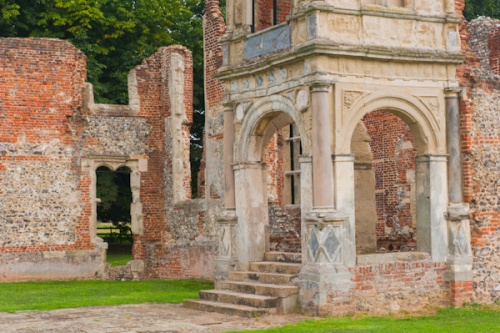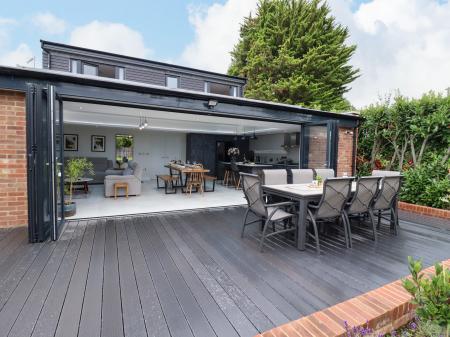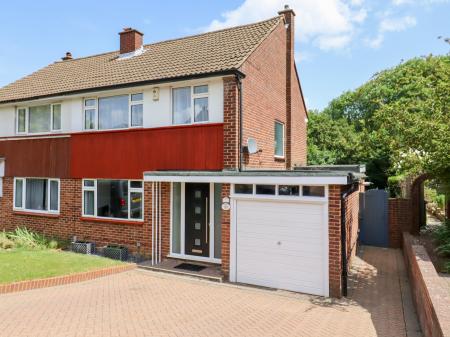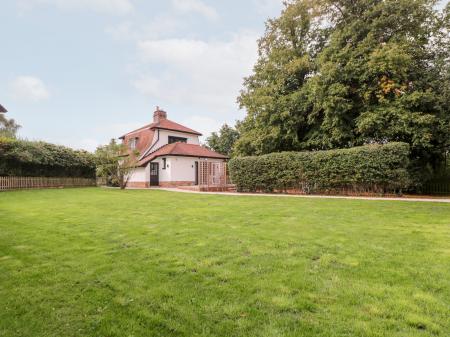
Unfortunately, those days are long gone, and what remains today is a ruinous structure comprising a 2-storey porch, parts of the hall, a chapel and clock tower. Seeing these remains, it is hard to visualize just how grand and imposing the original house must have been.
History
During the medieval period, the manor of Gorham was owned by St Albans Abbey, but after the abbey fell victim to Henry VIII's Dissolution of the Monasteries the estate went into private ownership and was eventually purchased by Sir Nicholas Bacon. Sir Nicholas poured time and money into his new property, completely replacing the medieval residence with an extravagant new house.
Did it impress the queen?
Apparently not; on her visit in 1572 she remarked, 'My Lord, what a little house have you gotten'. Sir Nicholas, quickly retorted, 'Madam, my house is well, but it is you that have made me too great for my house'. Flattery sufficed for the moment, but Sir Nicholas made sure that he expanded the house to create a more favourable impression for the queen's next visit in 1577.

Sir Nicholas was succeeded by his son, Sir Francis Bacon, one of the great philosophers of his age. Sir Francis served as Chancellor to James I, and like his father, poured money into Gorhambury.
He extended the house and created a water garden centred on a banqueting house after the Roman model. Sir Francis fell into debt, and in 1621 he was found guilty of corruption. He was imprisoned, then fined for accepting bribes, and that was the end of his career in public office. He retreated to his country house at Old Gorhambury and there devoted much of his time to the writing and scientific experiments for which he is chiefly remembered.
After Sir Francis' death, the house began a steady decline. It was restored in the 1670s by Sir Harbottle Grimston, but over the next century it fell into disrepair.
In 1784 a new Gorhambury House was built in fashionable Palladian style a short distance away, and the 'Old' Gorhambury House was allowed to crumble into ruin, little more than an eye-catcher, or romantic feature, in the parkland. Among the items from the old house to be preserved was a set of painted glass panels, which can be seen in the new house.
What to See:
The most impressive part of the ruinous structure is the entrance porch, an astonishingly ornate structure embellished with neo-classical medallions, heraldic symbols, and Renaissance detail. Sir Nicholas lavished attention on the porch, using expensive Caen limestone for many of the carvings, and a mix of brick and chalk rubble for the rest.
Classical Doric columns stand on either side of an archway at ground level, with Ionic columns framing windows on the first floor. At the top is a royal coat of arms to Queen Elizabeth, and classical medallions and elaborately carved statues abound.
By contrast with the porch, the rest of the house seems subdued, or perhaps 'overwhelmed' would be more apt. Unlike the porch, the main buildings are made of local flint, exposed now beneath a coating of pink plaster. It seems clear that Sir Nicholas used the cheaper flint but plastered it over to look like brick, which was the more expensive material at the time, and much more a symbol of high status and influence.
The design was fairly traditional in Tudor times; a courtyard, with the main hall opposite the entrance porch. There was a galleried cloister on the west, with a chapel and clock tower, while to the east is an annexe used as a ballroom, and to the north is a smaller second court with offices and the kitchens.
Getting There
If 'new' Gorhambury House is open you may be able to drive there and walk down the lane behind the house to where Old Gorhambury lurks amid a copse of trees. Otherwise - and far more likely - is that you will have to walk from the entrance to the Gorhambury estate drive, off the A4147 Hemel Hempstead Road.
The drive is immediately beside the ticket kiosk for the Roman theatre. This is roughly 2 miles and though mostly level and very easy going, will take at least 30 minutes.
What we did is to park in the large Verulamium visitor centre parking lot across the A4147 and walk from there, combining a visit to the theatre, Verulamium Museum, Roman mosaics and walls, and Old Gorhambury House.










 We've 'tagged' this attraction information to help you find related historic attractions and learn more about major time periods mentioned.
We've 'tagged' this attraction information to help you find related historic attractions and learn more about major time periods mentioned.


